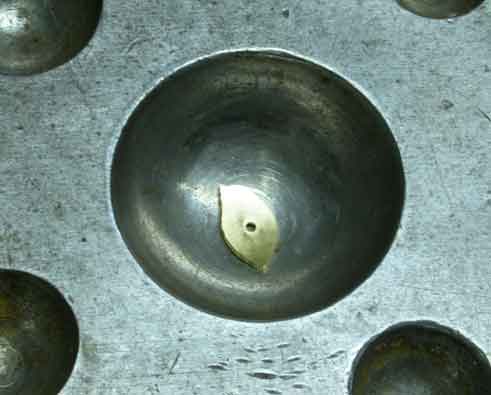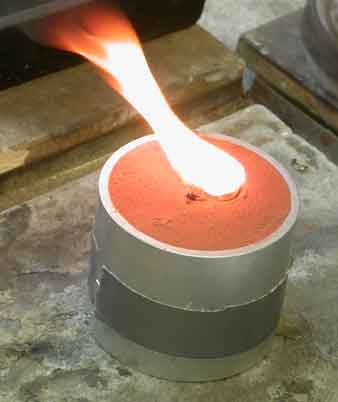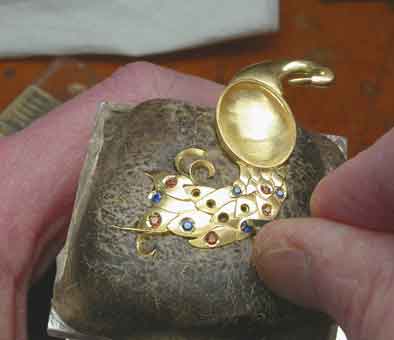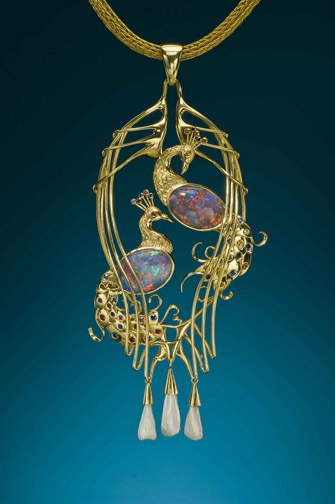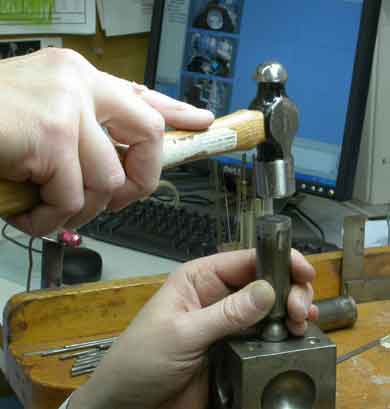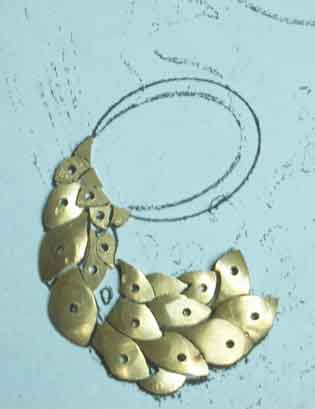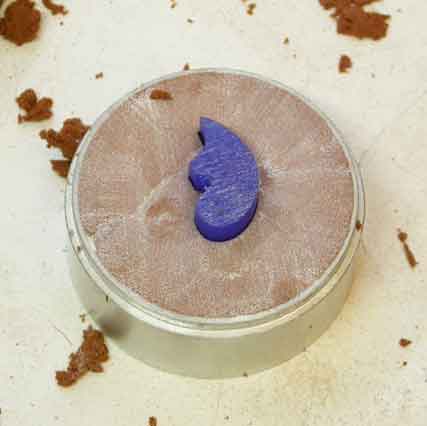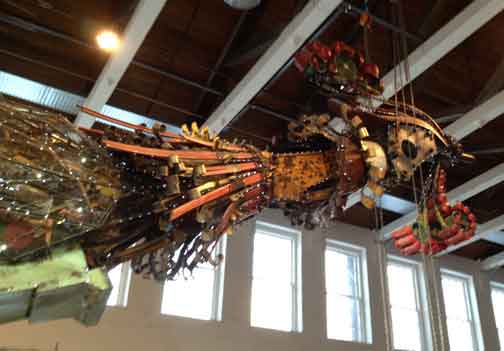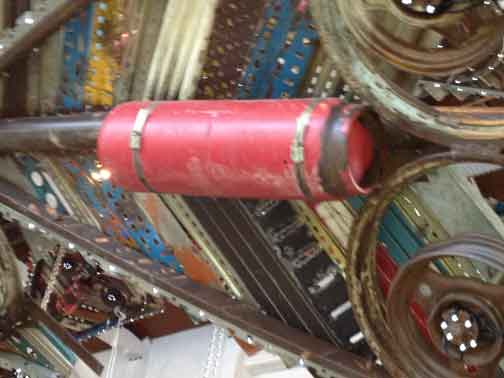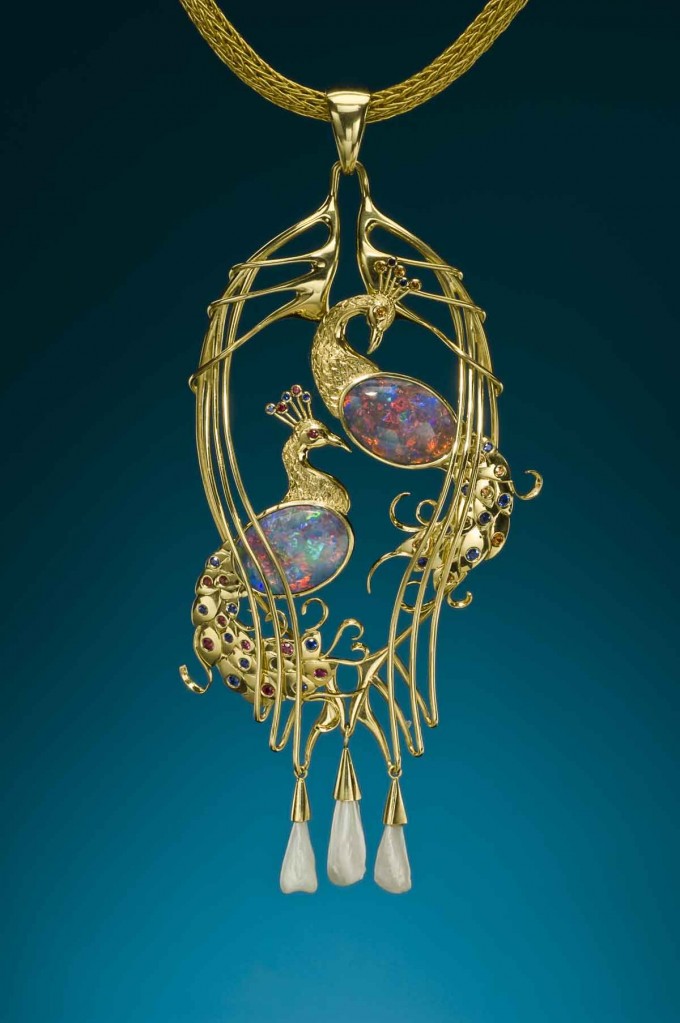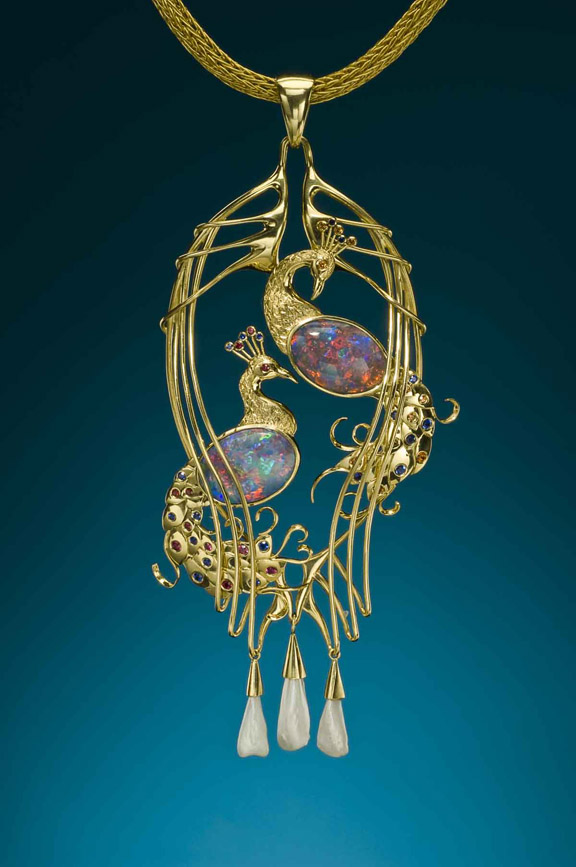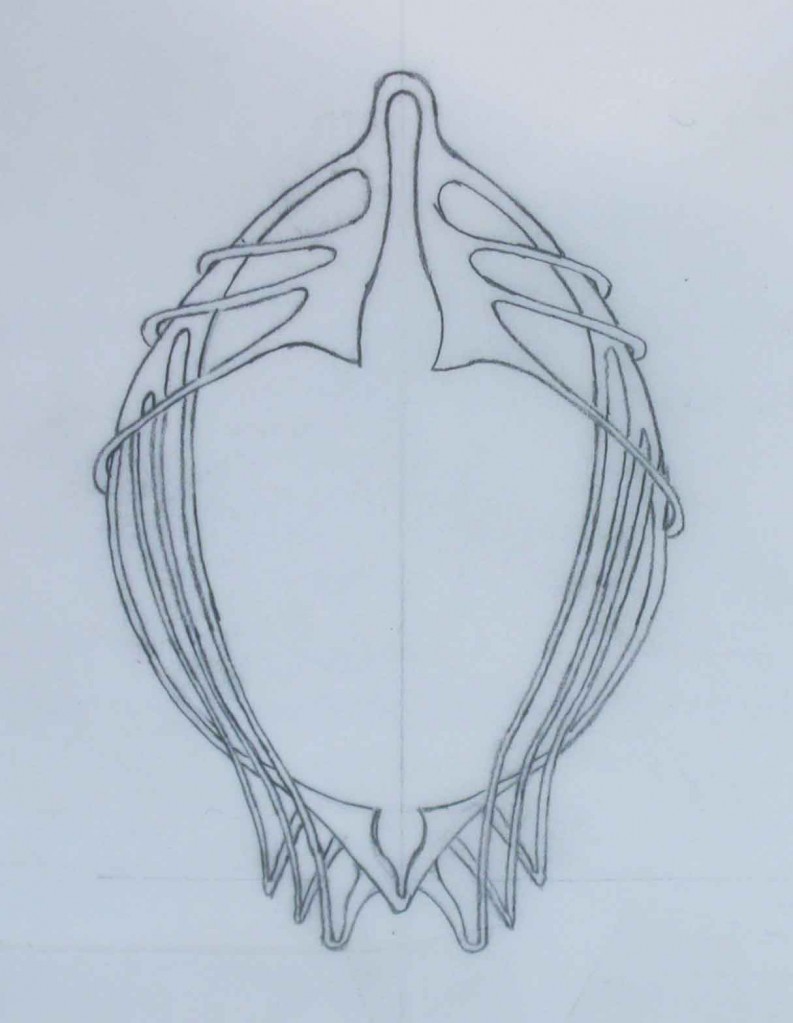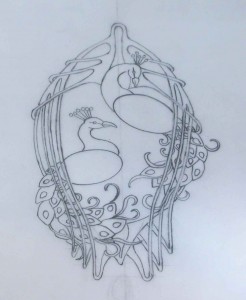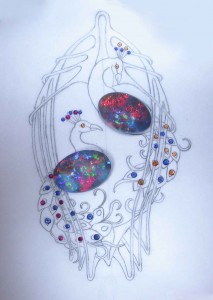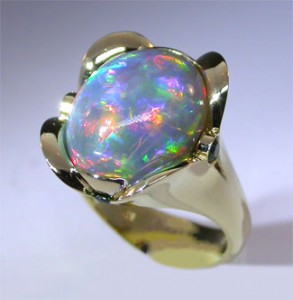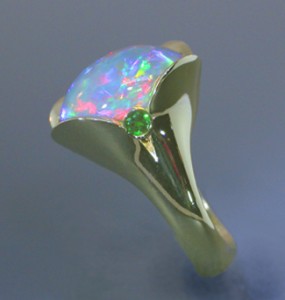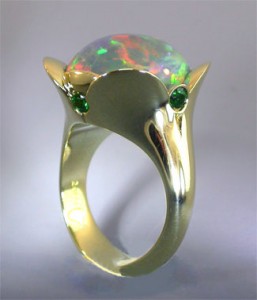by Richard W. Wise, G.G.
©2011
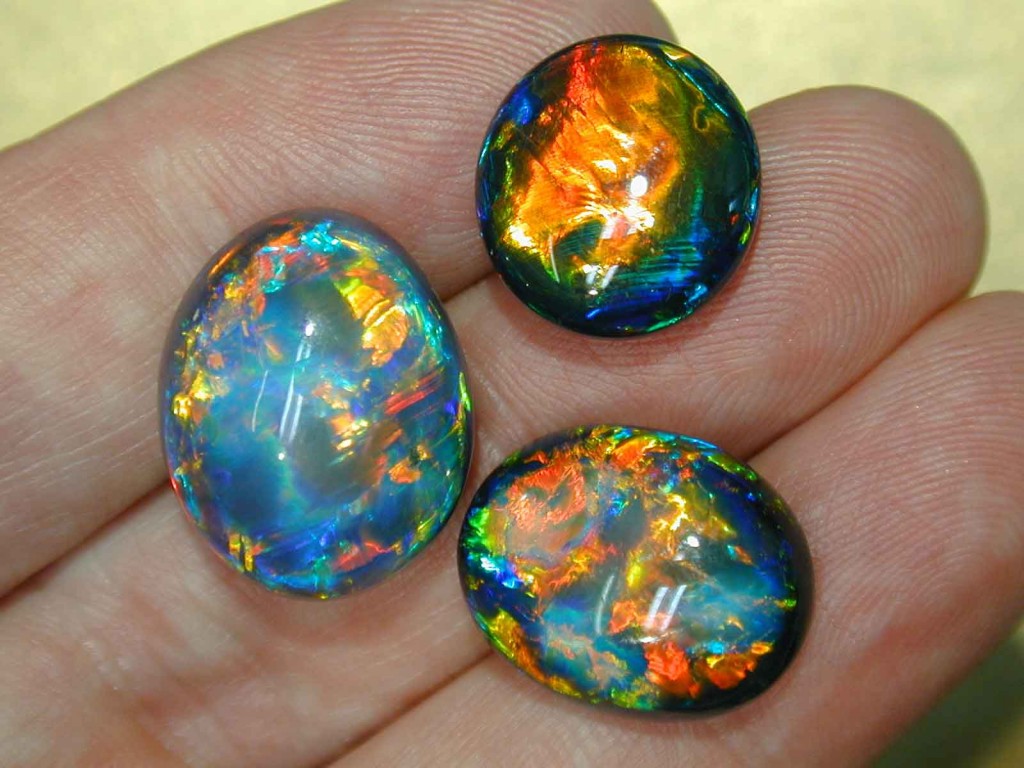
Three black opals showing two tones of body color. The Australian valuing system recognizes nine degrees of body tone. The gems at right would be graded N1, the oval to the left N3. Photo: Cody Opal
Over the past decade it has been my privilege to get up close and personal with some of the world’s most fabulous opals. My love affair with this idiosyncratic gem began in 1991 with a visit to the opal fields of Queensland. At that time I was researching an article that would eventually be featured in Gems & Gemology, the journal of the Gemological Institute of America, under the title: Queensland Boulder Opal.
Queensland, like most of the Australian outback, has come to embody the frontier spirit, the ethos of America’s old west. Strong solitary loners, men of few words with names like Texas Jack and Silk Shirt Joe, labored under almost unbelievably harsh conditions, nourished by the stubborn belief that sooner or later they would hit pay dirt. It took just a few days days with the guidance of the late Vince Evert to realize that even in the waning days of the 20th Century, much of that spirit lived on.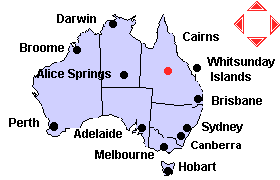
With Evert as our guide, the adventure began when our Piper Apache approached a bumpy dirt airstrip that had been carved out of the arid plains on the outskirts of Winton (marked w/red dot), a frontier town 350 miles into the Queensland outback. The Evert family are among the town’s most substantial citizens. Proprietors of a gift shop and the town’s only outdoor theater, they are also one of the area’s largest mining operations–entrepreneurs and opal cutters. It was Vince, dressed in khaki with a plain brimmed Akubra hat—Australia’s five gallon version of the ten gallon hat—who stood waiting as our single engine plane taxied to a dusty stop.
It was a sunny day in early March, the temperature hovered around 120°F. The outback is basically desert, and water is drawn from bore holes, wells that reach as much as 3,000 feet down below the cracked brown earth; the water comes up hot and stinking of sulfur.
Describing Opal:
Opal nomenclature can be a bit tricky. In the old days unwieldy and confusing terms such as white, crystal, semi-black, semi-black crystal and black were used. The new Australian system of classification now recognizes nine levels of body color or body tone (N1-N9).

Figure 1: Opal body tones, there are nine basic grades and opal gets noticeable lighter in body color as you go down the scale. Photo: Cody Opal
Body color is the background color, the color of that part of the opal which shows no chromatic fire (play of color). Opal classifications are based strictly on visual appearance. Black opal, generally speaking, is found at Lightning Ridge, but all opals produced at The Ridge are not described as black. This differs from the system of pearl classification where, for example, any pearl produced by the Pinctada Margaritifera (black lip) oyster, regardless of body tone, is termed a black pearl.
Grading Opal:
“You can learn diamond grading in an afternoon, learning to grade opal might take twenty-five years.”
Richard T. Liddicoat
In my book, Secrets Of The Gem Trade, The Connoisseur’s Guide…, I devote considerable space to a comprehensive discussion of the grading of opal, thus I will not attempt to cover all bases in this post. The descriptive system cited above was not in use at the time the book was published (2003).
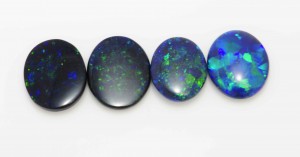
Figure 2: Saturation levels in opal. Viewed from left to right the stones show higher levels of saturation (brightness). Be careful of the last one on the right as it depicts a pattern of large flashes which will appear brighter than the smaller more discrete pinfire play-of-color in the images to the left. Photo: Cody Opal
Opal is like a light bulb–the brighter, the better. It is not the given hue, but the brightness or saturation of hue that is the primary criterion of value. Color, as we know, divides into three components: hue, saturation and tone. Hue is color as the term is ordinarily used, e.g. greenish blue, pinkish purple. Saturation refers to the quantity, or brightness of a given hue. Figure 2 depicts levels of saturation, although some opal experts prefer the term brilliance. Moving from left to right, the colors become more intense. As opal types, the first two stones in figure 2 would be classified N1, the third N2 and the fourth probably N3. N1-N4 are examples of what is normally called black opal. N6-N7 are called crystal opal and N8-N9 are light opal.
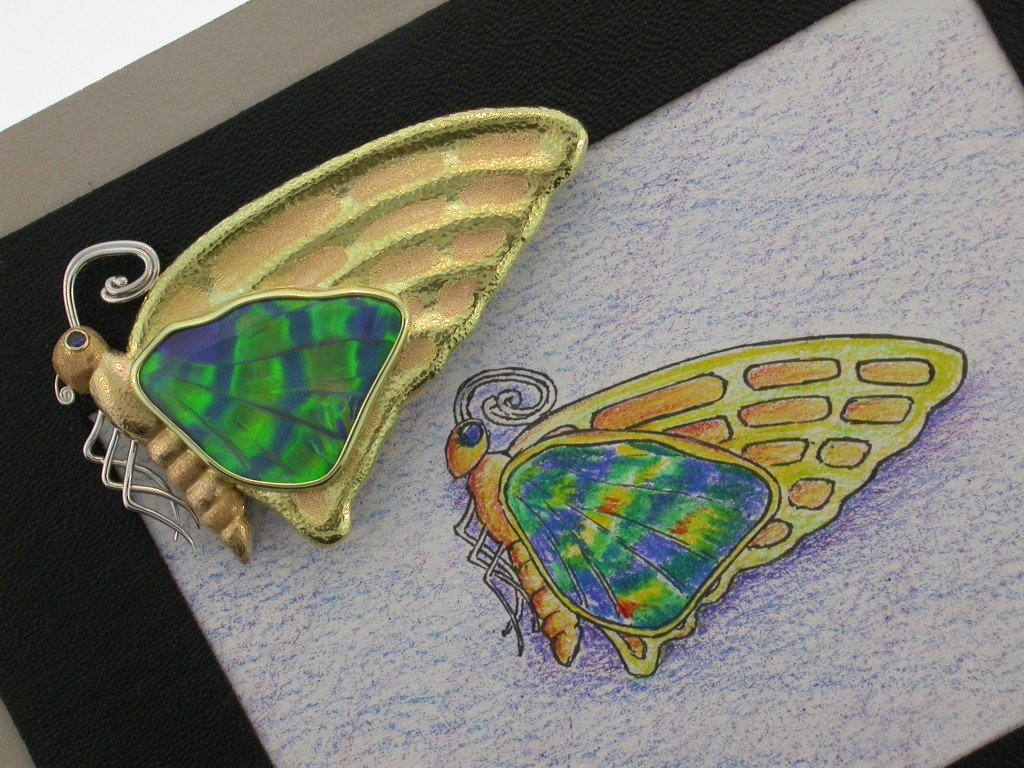
A black opal exhibiting the rare "peacock's tail" pattern. The opal was cut in a shape that resembled a butterfly's wing. At the risk of mixing metaphors, we designed and created an opal butterfly with a peacock pattern in 18k yellow, rose and white gold. The design rendering is shown as background. Courtesy: R. W. Wise, Goldsmiths. Photo: Jeff Scovil
Patterns:
Pattern is important. Larger blocks of color are more highly desired than smaller. Figure 2: Moving from left to right the color becomes increasingly more saturated. Note also that the stone at the far right is more beautiful because the color is not only more saturated (brighter), but also because the pattern of larger chunks of color is both more visible and more pleasing to the eye. The grading of patterns is unique to opal. Some, like peacock’s tail, are easily identified because they closely resemble their pattern-name. There is a hierarchy of rarity associated with pattern that any true opalholic must learn by rote.
Generally speaking, those evocative patterns which are readily identifiable with names like Grass, Chinese Writing and Mackerel Sky are the most desired. At the very top of the list sits Harlequin, rarest of the rare. This pattern is named for the ambiguous clown-like figures dressed in suits with large diamond shaped patches which inhabit the paintings of Picasso’s Blue period (see below left). I have seen only three harlequins in twenty years and only two with a true red component.
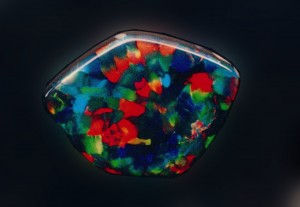
Millennium, a 25 carat Harlequin opal sold several years ago by R. W. Wise, Goldsmiths. Millennium is known as a red multicolor because the gem has the the double virtues of large angular blocks of color and a dominant red, which is the rarest hue in opal. Photo: Rudy Weber
Pricing Opal:
Opal prices can vary from a few dollars to hundreds of thousands. Additional criteria including color and transparency are also key to the valuing equation. Beauty is, as always, the defining criterion.
In 2008, opal experts Andrew and Damien Cody published a beautiful booklet, The Opal Story, A Guidebook (ISBN: 978-0-9805987). Aside from some of the most magnificent photographs of some of the finest opals ever to see the light of day, the Codys identify seven value factors in the grading of opal: type, brilliance, body tone, transparency, pattern, dominant diffracted colors, thickness of color bar and shape. 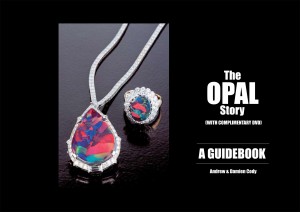 These criteria are consistent with the new Australian system of valuing. I would advise anyone seeking to sharpen their understanding of opal grading to purchase a copy of this booklet. The Opal Story Book and DVD is available for $29.95 AUD plus shipping and handling of $6 AUD. Orders can be emailed to opal@codyopal.com . The order should include mailing address and phone number together with credit card details.
These criteria are consistent with the new Australian system of valuing. I would advise anyone seeking to sharpen their understanding of opal grading to purchase a copy of this booklet. The Opal Story Book and DVD is available for $29.95 AUD plus shipping and handling of $6 AUD. Orders can be emailed to opal@codyopal.com . The order should include mailing address and phone number together with credit card details.
